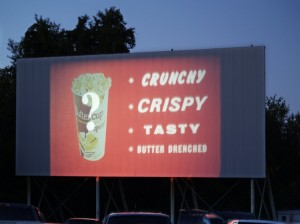For more than a decade now, Search Engine Optimization (SEO) has been growing in importance. Getting a high ranking in search results, the thinking goes, will lead to more traffic which in turn will lead to a larger list and more sales.
Much of that is out the window now.
Google, still the 800 pound gorilla in the search engine space, went and changed the rules of the game. Again.
I’m not blaming Google. The changes they made are actually good for web surfers. Just because they’re not so great for web site owners isn’t really all that much of a problem. Web sites who are doing things right shouldn’t suffer too much from the changes Google made.
It was really a series of changes each of which, taken in isolation, wasn’t all that big a deal. It’s only when looked at in combination that one begins to see just how much has changed.
Google makes changes to its search algorithms all the time but they’ve made at least ten major changes in the last year. Three of those are significant in the ways that they’ve undermined website owner’s ability to game the system through keyword optimization.
1. Personalized Search – This is arguably the most significant change to the way search results are displayed that has ever happened. Users with a Google account (Gmail, Google+, etc.) who are logged in at the time of performing a search using Google’s search engine will see personalized results. Google will take into account what it already knows about such users — their interests and preferences — and personalize the search results accordingly.
This means that two different users, both in the same geographic area and both searching for the exact same terms, may now see different results. This effectively erases almost every single advantage of SEO. No longer does optimizing for keywords automatically mean high rankings. Not even when those keywords are highly specific nor when the search terms very closely match the keywords.
Of course from a user perspective, this is terrific news. To throw out a completely hypothetical example, two users in the same town search for ice cream shops. If Google knows my favorite ice cream flavor is caramel mango fudge while the other person’s favorite is mint pecan truffle, we may each see different listings. At the very least, our listings may be presented in a different order. The results will be customized based on our individual preferences.
2. Recency – As if personalized search weren’t enough of a game changer, Google now also gives preference to recency of publication. Obvious examples include sports scores and election results but recency could even be applied to such things as solar eclipses and illness outbreaks.
In a nutshell, more recently published content gets preferential treatment over older content. So someone looking for NCAA scores will see this year’s scores, not those from previous years.
Some SEO “experts” have suggested periodically making minor tweaks to existing content so that it always appears to be fresh. I can’t imagine that the hundreds of brainiacs at Google haven’t already thought of that and taken it into account. I think the only way to remain at the top of the heap is to continually keep putting out genuinely fresh new content. And naturally that content must be valuable and relevant to your niche.
3. Private Searching – One biggie that isn’t necessarily visible to surfers but which nonetheless will have a huge effect on SEO is what Google calls private searching. Again, this is extended only to those users who have some type of Google account and are logged in when they perform their search.
When directed to a web page, Google will not pass along the search terms or even where those users came from. This makes for a gaping hole in website owners’ analytics. Suddenly, a large percentage of visitors are an unknown quantity. The owners’ don’t know where those users came from or what brought them, therefore they can’t effectively optimize to bring in more such users.
Taken together, these and other ongoing Google tweaks make for a better internet experience for users while frustrating online entrepreneurs. No longer can entrepreneurs simply optimize pages for a few keywords and expect to generate traffic. Now they have to work harder than ever to stay current and relevant.
Click any of the icons below to retweet these passages from the above article.
Remember, we’ll donate money to charity for every retweet. No purchase necessary. You retweet, we donate. It’s that simple.
![]() Google went and changed the rules of the game. Again.
Google went and changed the rules of the game. Again.
![]() 3 recent Google changes have undermined the ability to game the system through SEO.
3 recent Google changes have undermined the ability to game the system through SEO.
![]() This is arguably the most significant change to online search that has ever happened.
This is arguably the most significant change to online search that has ever happened.
![]() This effectively erases almost every single advantage of SEO.
This effectively erases almost every single advantage of SEO.
![]() No longer does optimizing for keywords mean high rankings. This is terrific news.
No longer does optimizing for keywords mean high rankings. This is terrific news.
![]() This Google change could be applied to such things as solar eclipses and illness outbreaks.
This Google change could be applied to such things as solar eclipses and illness outbreaks.
![]() The only way to remain on top of the heap is to keep putting out genuinely fresh new content.
The only way to remain on top of the heap is to keep putting out genuinely fresh new content.


